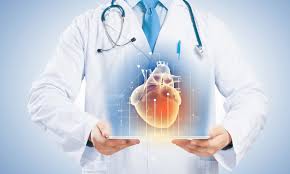
Hammerer-Lercher A. Clin Biochem. 2020 Jan;75:1-6.
Cardiac arrhythmias can approximately be classified into brady- and tachyarrhythmias. The most prevalent arrhythmia is atrial fibrillation (AF) which shows correlation with an enhanced risk of heart failure and cardio-embolic stroke if not diagnosed and cured appropriately. On the other hand, ventricular arrhythmia may present with hemodynamic instability and/or deteriorate into ventricular fibrillation (VF) and sudden cardiac death. So, it needs instantaneous diagnosis and inhibitory treatments. AF is correlated with a nearly two-fold greater mortality rate because of heart failure and cardioembolic stroke, accentuating that optimal therapeutic strategies are though not fully met. In the presence or absence of a structural heart disease, the novel biomarkers reflecting or interceding arrhythmogenic mechanisms represents an unmet clinical requirement. Thus, Hammerer-Lercher A et al., conducted a review to combine both experimental and clinical evidences in order to yield an updated overview of candidate biomarkers reflecting techniques underlying cardiac arrhythmias through fibrosis, inflammation, neuro-humoral activation and autoimmunity and their potential role to ameliorate prevention, early recognition, and risk stratification of cardiac arrhythmia and its therapeutic effect.
The best validated diagnostic and prognostic cardiac biomarkers are cardiac troponins in the field of acute coronary syndromes till date, and natriuretic peptides (BNP or NT-proBNP) exhibit the best accessible biomarkers in heart failure, by yielding i) added diagnostic value in case of intermediate clinical probability, ii) a strong and independent prognostic value, and iii) therapeutic guidance in patients with decreased ejection fraction. A lot of inflammatory biomarkers have been correlated with the risk of occurrence AF and degenerate after CAAF, following with the “inflammatory channelopathies” paradigm, incorporating tumor necrosis alpha (TNF-α), interleukin (IL)-6, IL-8, IL-10, IL-1β, myeloperoxidase and CRP. A rapid electrical stimulation in vitro and in vivo activated the pro-fibrotic protein Gal-3, i.e. a β-galactoside-binding lectin and structural and electrophysiological remodelling exerts arrhythmogenic impact. Gal-3 exhibited to anticipate incident AF in the studies of heart failure (HF) and in specific cases associated to cardiac fibrosis (including atrial fibrosis).
A member of the transforming growth factor-β cytokine superfamily i.e. GDF-15 showed effect on cellular ischemia and mechanical or oxidative stress to protect the myocardium against hypertrophy and fibrosis. A substantially greater concentrations of GDF-15 were found in patients with paroxysmal AF than controls and also correlated with LAA thrombi. Soluble ST2 (sST2), an endogenous inhibitor of IL-33 pro-inflammatory signaling in cardiomyocytes, showed reduction in inflammation, myocardial fibrosis, hypertrophy and averse myocardial remodeling. In patients with heart failure and acute myocardial infarction, high concentrations of sST2 were initially indicated in the risk stratification for consequent adverse cardiovascular occurrences. The role of humoral autoimmunity has recently obtained a significant interest as a biomarker and mediator of cardiac arrhythmia not only in patients with overt autoimmune disorders, but also in a number of arrhythmias currently categorized as idiopathic. High levels of anti-Ro/SSA IgGs are commonly recovered with a prevalence differed between 0.5% and 15% in the general population and may reach 60% in patients suffering from TdP as per the analytical methods. The major class of autoantibodies vulnerable to affect sinus node function, and basal heart rate regulation are represented by the antibodies directed against different members of the G-protein–coupled receptor family. Autoantibodies acts both on the adrenergic and the renin-angiotensin systems to moderate autonomic system dysregulation since HDL levels have been exhibited to protect individuals against premature atrial contraction. Autoantibodies may have shown an albeit promising class of biomarker candidates in cardiac arrhythmias for 3 reasons. Firstly, auto-antibodies can be particularly and sensitively computed with a sufficient analytical precision on different analytical platforms consistent with automation, allowing clinically consistent throughout, turn-around times and costs. Secondly, autoantibodies are likely to represent arising therapeutic targets rather than innocent bystanders as current evidences point to autoantibodies as active mediators of arrhythmogenic procedures that can be reversed by specific available therapeutic means. Lastly, as pathogenic autoantibodies are often detected in asymptomatic individuals with poor forecast, their detection could help recognizing patients in an early disorder stage where inhibitory immunomodulatory strategies would be of highest value.
Thus, it was concluded that inflammation, fibrosis, and autoimmunity exhibited as a major pathophysiological procedures frequent to both brady- and tachyarrhythmias. Evaluating biomarkers reflecting or interceding these procedures has shown some promise, however whether any of these will enhance current risk prediction models remains uncertain. A multiplex approach with the concurrent evaluation of different autoantibodies would be required to reach a comprehensive overview of their respective correlation or role in the several existent forms of arrhythmias.
BNP: B-type natriuretic peptide; NT-proBNP: N-terminal proBNP; CAAF: catheter ablation of AF; CRP: C-reactive protein; AF: atrial fibrillation; Gal-3: galectin 3; LAA: left atrial appendage; TdP: Torsades de pointes; IgG: Immunoglobulin G; SSA: Sjögren’s-syndrome-related antigen A

